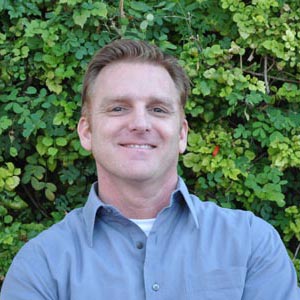We humans are programmed to seek and be fulfilled by connection (e.g. to God/Higher power, with self, and to self, and with others). Unlike most other mammals (or animals in general!), we are completely dependent on that connection with a parent/caregivers for our survival not just for days, but for many years. Our basic on-going needs for survival are food, water, shelter and sleep. As long as these needs are met adequately, we want to do more than just survive; we want to thrive. One of our primary needs in order to thrive is human intimate connection. We seek to love and be loved, to belong, to fit in, and to feel through interaction that we matter to another human being. We crave to be known, understood, and validated. We need to know that there is somebody who is available and has our back in times of trouble. We want to have somebody with whom to laugh and have fun. Most of us have a strong desire to find someone with whom to experience romantic love and sexual pleasure/connection.
When we fail to meet that need for connection, we do not thrive. Most of us meet that need to some degree, so we have varying degrees of thriving or well-being. The greater the gap between our desired connection and our experienced connection, the greater our loneliness. Simply defined, loneliness is “the failure to adequately meet the need for connection”. Loneliness is one of the most painful human experiences. Ironically, the reason we often fail to meet our need for connection and therefore experience loneliness, is because we over-protect by not letting people in, or perhaps even blatantly pushing them away. This protection leads to the avoidance of many kinds of hurtful experiences we could have in relationships, and yet sets us up for the MOST PAINFUL experience……loneliness.
Thus, there is an inherent “catch-22” of our human experience:
In order to thrive, we have to meet the need for human connection. In order to meet that need we have to be vulnerable and be willing to share our true self (thoughts, feelings, wants, needs, etc.). If we do so and we get connection/validation- AWESOME!! That feels great. However, if we get hurt, rejected, used/abused, let-down etc., we are hurt and then shift our focus to protection. The ways we protect often show up as walls that either a) push people away, or b) keep people from getting too close. These walls afford us protection, but prohibit connection. Without ways of healing those past wounds and of protecting ourselves in more balanced ways than these extreme walls, the cycle continues to escalate until we have lives and relationships that are organized around protection rather than connection. We settle for cheap substitutes for true intimacy like food, pornography, drugs, material goods, accomplishment/success, money, intensity, superficial relationships, social media “likes”, etc. and we fail to thrive.
Granted, some people would be better off alone than interacting with the toxic people who are currently in their lives. If our relationships include shame, blame, ridicule, abuse or neglect, – we may thrive more by hanging out with Just God and the dog! However, there is almost always somebody “out there” with whom we can have a fulfilling relationship/friendship. And, when we choose to isolate, the things we can start to believe about ourselves in the absence of loving feedback from intimate others, and the things that we end up doing to numb out the pain of loneliness become primary sources of our mental health problems. Addictive behaviors/substances are among the most costly of such problems. We use addictions to numb out pain from past or current hurts, to wall off and protect from future hurts, and/or to experience pleasure/get a high to “fill the voids” created in our state of loneliness.
To the contrary, healthy relationships are a source of not only the love/connection we deeply desire, but also of accountability and support. This accountability and support can make all the difference when trying to make difficult changes such as recovering from an addiction or stopping other destructive behaviors. This is why we need families/support systems. This is in large part why 12-step programs are so helpful to so many. In addition to the focus on spirituality and surrender, these are programs of relationship….of human connection. However, recovery relationships fail to meet our deepest needs for connection when used as more comfortable sources of human interaction while avoiding the healing work needed with loved ones who may be struggling with hurt, anger and mistrust.
The “out” for the catch-22 described above is in large part dependent upon the willingness to be vulnerable in the name of connection, and when needed to bring in protection through assertive boundaries rather than using “walls”. Boundaries allow for both connection and protection. They are clear messages of “I feel _______ (e.g. hurt, angry, scared) when you __________, and I need you to know that is not OK with me, so I’m asking you to please ____________. If that is not respected by the other person, the boundary may end up needing to include, “and if you choose to do that again, what I will do to take care of myself is ___________.” (note: it is critical that you tell the other person very clearly what you will do to take care of yourself rather than telling him/her what their “consequence/punishment” will be! No adult likes being disciplined, punished or controlled). It is critical that when setting boundaries/expressing anger that it is with an assertive tone. Assertiveness, unlike passivity or aggression, is clear, honest, open, respectful and direct; remember the acronym “CHORD”).
Among the most critical relationship skills and wills, are apology and forgiveness. Not quick apology or cheap forgiveness, but hard work over time that involves dealing with thoughts, feelings, and behaviors necessary to bring about the necessary healing. (more on apology and forgiveness will be shared in a future blog). We will all be hurt within our friendships, marriages/partnerships and family relationships (e.g. parents/children/siblings). While some of that hurt comes from the intentional toxic behaviors of others, it is more often the result of mismanaged struggles in the balancing act of connection and protection.
The ability to maintain healthy connections with others, which inevitably includes being willing and able to apologize and/or forgive, is one of our greatest means to attaining and maintaining mental health. This is in large part dependent upon our being able to love, be connected to and forgive our self – and actually love our self and enjoy our own company! Most of the people I have worked with over 25 years as a counselor will readily admit that they are hardest on themselves, meanest to themselves and have the hardest time forgiving themselves. Just like our relationships with others, this journey toward self-love, acceptance and forgiveness is long and hard…and like many “roads less travelled” is also profoundly rewarding! I hope we can all be a little more gentle with, and forgiving of, ourselves and more patient with our imperfect loved ones as we navigate this journey we call life….and that we can remember we all have a LOT more in common than we have differences! Travel well 🙂
Article by Brian Case, Ph.D

 (480) 947-5739
(480) 947-5739 info@pcsintensive.com
info@pcsintensive.com










